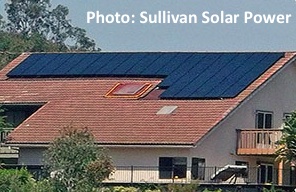Net metering in California is ending and solar customers are not happy. The billing arrangement that allows solar owners full retail credit for the energy they put back on the grid (aka net metering) is ending so consumers and businesses who wait until summer to install their solar systems will miss out on the program.
“The upcoming changes for solar producers will undoubtedly create an unprecedented demand,” said Daniel Sullivan, founder and president of Sullivan Solar Power. “Property owners  that wait until June to sign up to go solar may miss their chance to receive the full retail credit that current solar producers receive.”
that wait until June to sign up to go solar may miss their chance to receive the full retail credit that current solar producers receive.”
As explained by Sullivan, net energy metering will end once a certain amount of solar is installed in each utility territory, and San Diego Gas and Electric (SDG&E) will be the first utility to reach its cap. Anyone that installs solar before the cap is hit will receive full retail credit for energy they produce, and will be grandfathered in for 20-years. Once net metering ends, new homes and businesses that install solar will receive less credit for the energy they produce.
“The period for going solar under the current net metering rules could end for SDG&E customers by December or even earlier, depending on how many people install solar this year,” said Bernadette Del Chiaro, executive director of the California Solar Energy Industries Association (CALSEIA). According to President Obama during his SOTU speech on Tuesday, today more solar energy is installed in the U.S. each week than in the entirety of 2008.
In order for property owners to get grandfathered in to current rules, the projects must be installed. A signed contract will not reserve a property’s space in the queue. Under normal market conditions, it takes an average of 120 days for a project to be delivered from the time paperwork is signed to installation completion. The solar industry is anticipating a bottleneck for installations, city permitting, and utility inspections.
“We are informing all San Diego property owners that are interested in going solar that they need to sign up by May in order to receive the current favorable rules and grandfathering protections,” said Sullivan. :September is when there’s the greatest demand for solar, but it is unlikely that people who wait until then will be installed before the rules change.”
In addition to the local changes, solar policy is going to become less favorable on a national level as well. The tax credit, which covers 30 percent of a solar project, is currently the largest incentive available for property owners that invest in solar. The federal tax credit for solar is ending in 2016 for residential properties, and will be reduced to 10 percent for commercial property owners.

